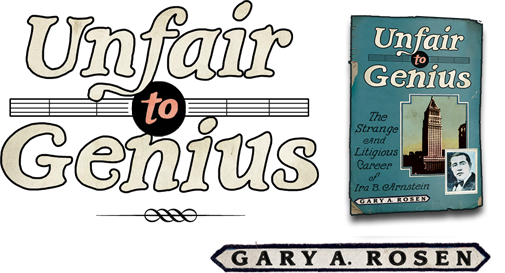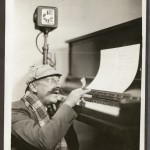

 In the fall of 1920, with his writing career at a standstill, Sigmund Spaeth accepted a job as the educational director of the American Piano Company. The position entailed traveling the length and breadth of the bourgeois America immortalized in Sinclair Lewis’s Babbitt, lecturing on music appreciation before school groups, social clubs, and civic organizations, and over some of the very earliest radio stations, sometimes giving as many as five programs in a single day. He entertained his audiences with a routine he called “New Tunes for Old,” in which he would play a serviceable rendition of a familiar popular song to demonstrate that the Ampico electronic reproducing piano worked well as an ordinary home piano, and then encourage his audience to listen closely as he pointed out common themes from a classical piece as it was reproduced on the Ampico from a recorded roll. The act helped sell Ampicos, but Spaeth liked to claim it was part of a larger pedagogic program. According to one of the earliest news accounts of his talks, Spaeth “charges the public with believing that classical music is tuneless while at the same time it goes into raptures glad or sad over modern strains which are purloined from the works of the greatest masters.” If that misapprehension could be corrected, Spaeth argued, popular music could be “utilized as a means toward the end of appreciating the classics themselves.”
In the fall of 1920, with his writing career at a standstill, Sigmund Spaeth accepted a job as the educational director of the American Piano Company. The position entailed traveling the length and breadth of the bourgeois America immortalized in Sinclair Lewis’s Babbitt, lecturing on music appreciation before school groups, social clubs, and civic organizations, and over some of the very earliest radio stations, sometimes giving as many as five programs in a single day. He entertained his audiences with a routine he called “New Tunes for Old,” in which he would play a serviceable rendition of a familiar popular song to demonstrate that the Ampico electronic reproducing piano worked well as an ordinary home piano, and then encourage his audience to listen closely as he pointed out common themes from a classical piece as it was reproduced on the Ampico from a recorded roll. The act helped sell Ampicos, but Spaeth liked to claim it was part of a larger pedagogic program. According to one of the earliest news accounts of his talks, Spaeth “charges the public with believing that classical music is tuneless while at the same time it goes into raptures glad or sad over modern strains which are purloined from the works of the greatest masters.” If that misapprehension could be corrected, Spaeth argued, popular music could be “utilized as a means toward the end of appreciating the classics themselves.”
 By the early 1930s, he had been rechristened The Tune Detective.” At the height of his popularity, Spaeth was dissecting the current hits on two weekly NBC shows of his own, as a guest star on many others, in newspapers and magazines, and in one-reelers for Fox and Vitaphone. His job title, he told Time magazine in 1932, was “writer, broadcaster, lecturer, composer, arranger and general showman and entertainer.” He also came to be viewed by some members of the copyright bar as a virtually indispensable fixture in music plagiarism cases.
By the early 1930s, he had been rechristened The Tune Detective.” At the height of his popularity, Spaeth was dissecting the current hits on two weekly NBC shows of his own, as a guest star on many others, in newspapers and magazines, and in one-reelers for Fox and Vitaphone. His job title, he told Time magazine in 1932, was “writer, broadcaster, lecturer, composer, arranger and general showman and entertainer.” He also came to be viewed by some members of the copyright bar as a virtually indispensable fixture in music plagiarism cases.
©2012 Gary A. Rosen